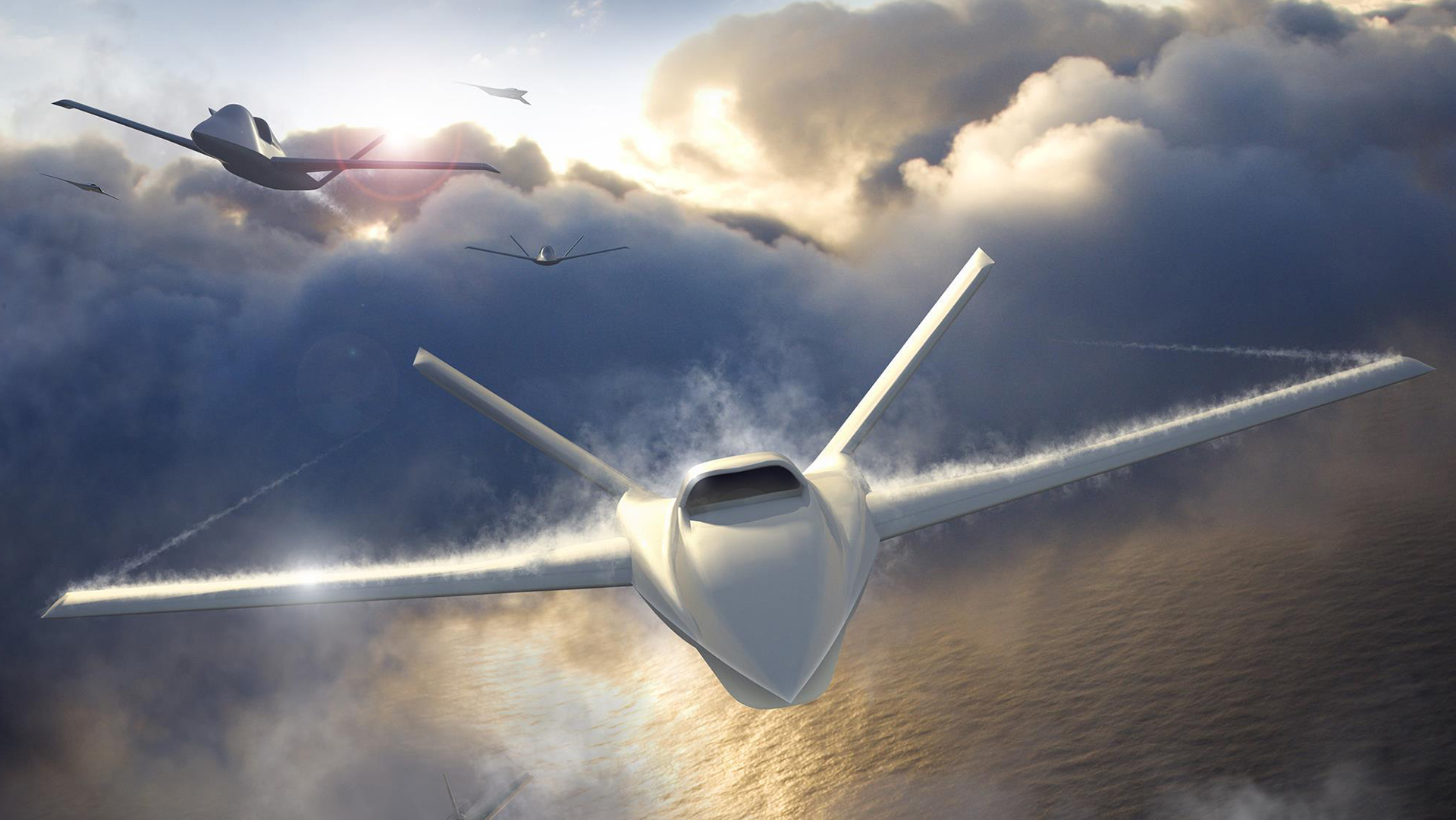As the Air Force commander tasked with countering China, the head of Pacific Air Forces (PACAF) is looking forward to the day when the concept of teaming advanced drones with manned combat aircraft becomes a reality.
And even though the Air Force says it won’t offer too many details about the highly classified program currently referred to as Collaborative Combat Aircraft (CCA), leaders like Gen Kenneth Wilsbach are already beginning to think about how it will be employed.
“I would say it’s in the very beginning stages because, in all candor, we’re just starting to see the initial actual technology start to reach the field,” said Wilsbach, speaking to The War Zone and other reporters on Monday at the 2022 Air and Space Forces Association Conference.

As an example, Wilsbach pointed to Boeing’s MQ-28 Ghost Bat drone, originally developed for the Royal Australian Air Force’s (RAAF) Airpower Teaming System (ATS) program.
“They’re in the midst of frankly, figuring out how these could be used,” said Wilsbach. “So there’s a number of questions out there associated with combat platforms that need to be answered as we go forward.”

“What do we want it to do?” he asked. “Do you want it to be a sensor or do you want it to be a shooter? Do you want it to be a relay platform, do you want it to be a decoy? And probably, I guess I want it to do all of that.”
Another consideration is how to “incorporate it into the force,” Wilsbach noted. “Will it be completely autonomous? Will there be artificial intelligence such that you program the CCA to go to a mission and it knows how to do that? Will they be remotely piloted and if they are remotely piloted, will they be flown from another aircraft?”
Wilsbach, who has been outspoken in the past about the need to significantly expand the Air Force’s unmanned capabilities, raised the hypothetical example of whether the CCA would be teamed with the E-7 Wedgetail airborne early warning and control aircraft or with fighter aircraft.

“How much autonomous operations will be applied to that? How do you control the aircraft?”
Teaming the MQ-28, as well as other unmanned combat aircraft, to work as organic protection for vulnerable high-value assets — tankers, surveillance, and command and control aircraft — is not a new idea. The Air Force has tested this to a limited extent. Ghost Bat has been discussed as serving in such a role in the past, for instance, and General Atomics has put forward a dedicated ‘protector’ aircraft concept.
Despite the unanswered questions, Wilbach is “a big fan of this CCA technology because I believe it will allow us to bring mass against our adversaries. That’ll be pretty difficult to contend with. You go into a combat area, and there are so many targets and you have a hard time figuring out which ones are the highest priority and which ones maybe you can just disregard for a bit. It’s a pretty hard environment to operate in. And so we’ll set that to our adversaries. It’ll give us an advantage.”
China is also actively working on similar capabilities.
While the CCA could provide an advantage by giving China too many targets to hit in the air, the Air Force is also looking for ways to keep China from hitting U.S. targets on the ground.

“Certainly we have concerns about their ability to fire bullets and missiles, which is exactly why we have a plan to combat [this] and make it much, much more difficult [for them] to target,” he said. “And we’re talking about wide dispersion. We’ve been working to get access to basing in quite a number of places that we have not worked from before, or in recent years. We’ve got quite a bit of funding coming up with plans to expand airfields and ramps, and facilities at those airfields like storage, weapons storage, and those sorts of things.”
Over the next three to five years, Wilsbach said that ”runways in the middle of the Pacific in a small little island [will] get extended so we operate off of them much more easily. Even in the Guam cluster, where we already have a number of airfields, we will be building more runways and taxiways and ramps and storage in those regions. So those are some of the things we’re doing to counter Chinese capability to put missiles in places where we operate.”
Beyond spreading out the locations from which the Air Force will operate in any conflict with China, Wilsbach stressed the importance of keeping U.S. forces supplied over long swaths of water.
“Our adversaries will try to keep us from getting fuel and water and food and parts and the people that will fix our aircraft to the places where they need to be,” he said. “We’re doing quite a bit and we’ve been funded this year and last year – we expect to be funded next year for prepositioning. So we’re putting quite a bit of prepositioned equipment across all of the Indo-Pacific so that you’d have resources in the places you intend to operate, which will reduce some of the stress on contested logistics.”

Speaking of lessons learned, Wilsbach said the Air Force picked up a few pointers about how China operates after it “overreacted” to House Speaker Nancy Pelosi’s visit to Taiwan last month.
“We did learn something,” he said. “And again, most is classified and I don’t want to share too much about that, but they showed some cards and we picked up on it, and so we’re incorporating that into our future plans.”
Overall, Wilsbach told The War Zone that he is “really confident” that the Air Force could counter China if ordered to do so in the event it invades Taiwan in the near term.
“We practice all the time,” he said.
Contact the author: howard@thewarzone.com
